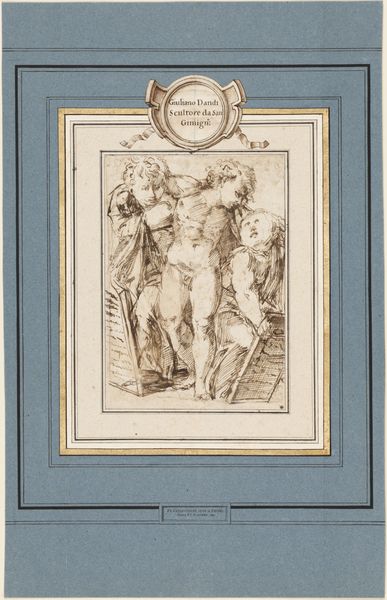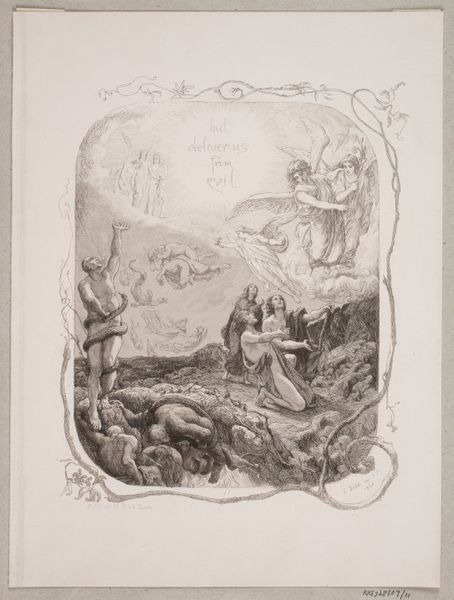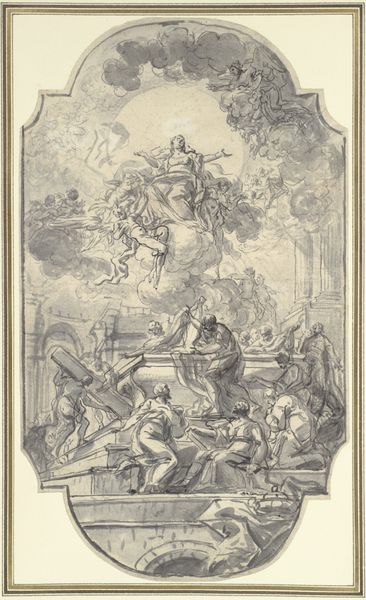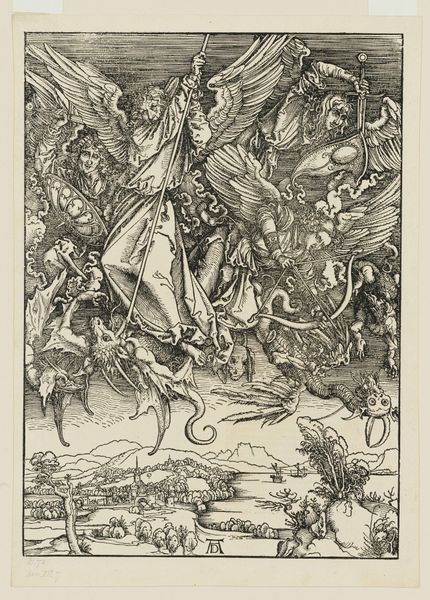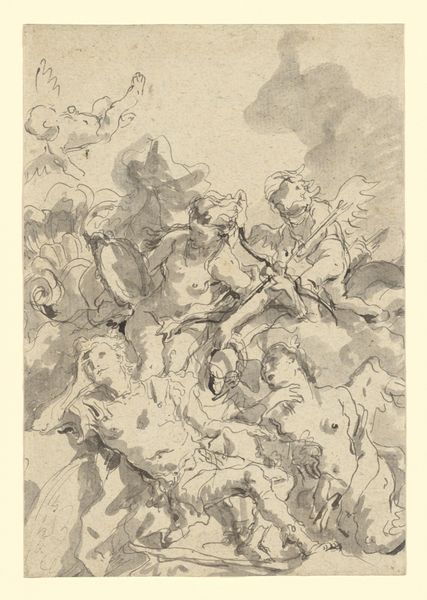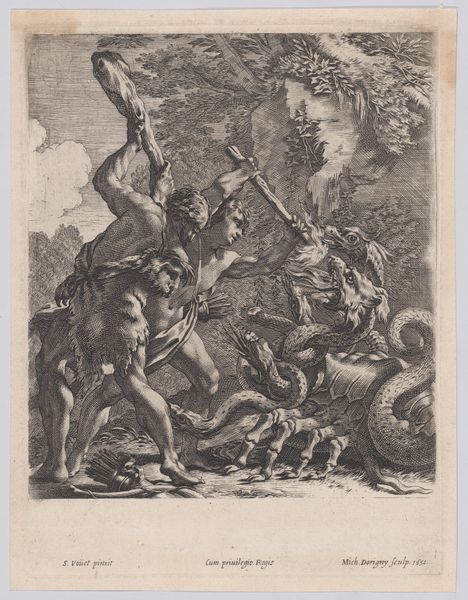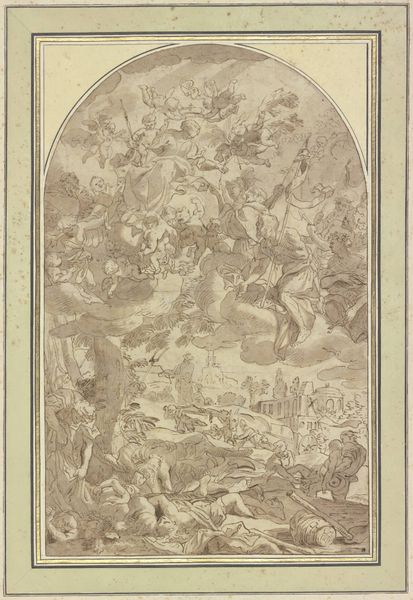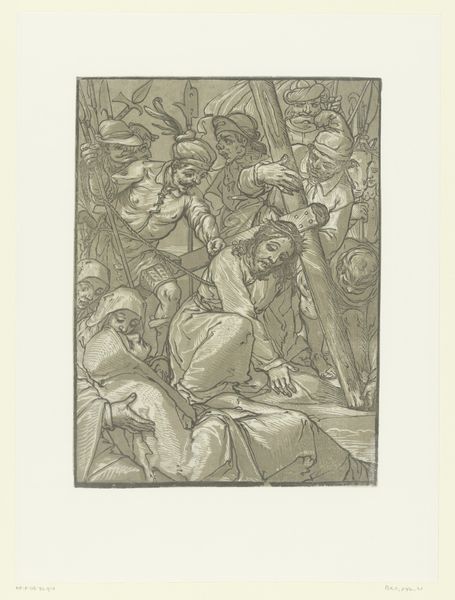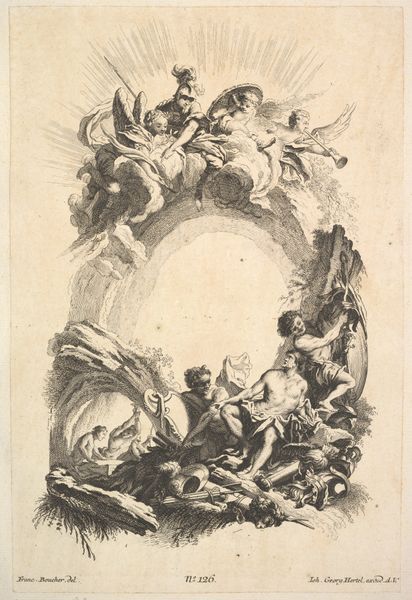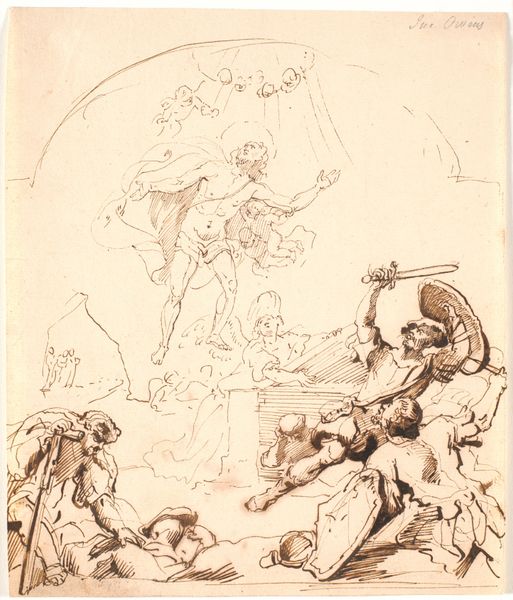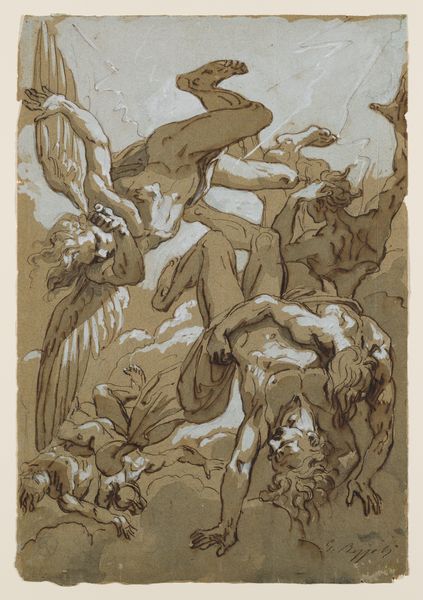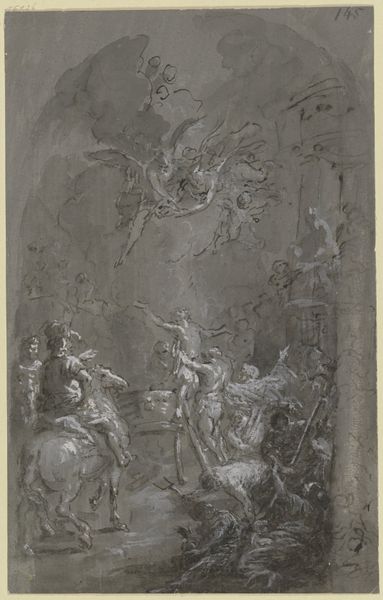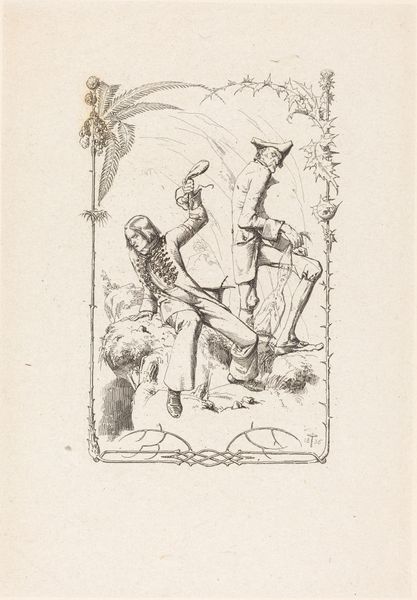
Perseus Turning Phinneas to Stone with the Head of Medusa 1767
0:00
0:00
drawing
#
drawing
#
allegory
#
figuration
#
history-painting
#
rococo
Dimensions: image (to outer framing line): 13.4 x 9.1 cm (5 1/4 x 3 9/16 in.)
Copyright: National Gallery of Art: CC0 1.0
Charles Monnet created this image of Perseus using pen, ink, and wash, back in 1763. The sepia ink wash gives the scene a dramatic, almost theatrical quality. Monnet’s technique, using layers of diluted ink to create depth and shadow, was typical of the period. But, the choice of this medium has a more profound impact. The translucence of the wash allows the white of the paper to shine through, creating highlights that suggest the dynamism of the scene. The physical act of applying ink with a pen allowed Monnet to achieve a high level of detail, particularly noticeable in the figures’ musculature and the folds of their drapery. The precise lines create a sense of order and control, even amidst the chaotic scene. Ultimately, understanding the materials and processes used by Monnet provides insight into the image's aesthetic qualities. It encourages us to reflect on the skills of the artist, and how the physical act of creation shapes our engagement with this image.
Comments
No comments
Be the first to comment and join the conversation on the ultimate creative platform.
